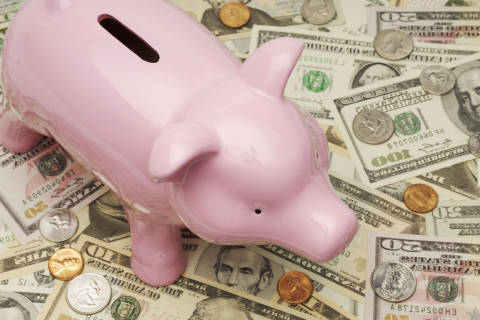Finding out what your limit would be on a credit card you’re interested in is both simple and impossible. It’s simple because you just need to apply for the card to get a firm answer. But it’s also impossible because you can’t get an answer unless you apply.
You could try to guesstimate: A good rule of thumb is to expect your credit limit to be about one to two times your stated monthly income, minus your monthly debt obligations. For example, if you report earning $36,000 a year, or $3,000 a month, and your total monthly debt obligations are $500, you might get a limit between $2,500 and $5,000. But, of course, that’s not true in every case.
“There’s a lot more logic that goes into it than that,” says Tiffani Montez, a senior analyst at Aite Group, a consulting firm for banks. While regulations and conventions govern some of these practices, there’s no universal formula that every issuer uses. “Everyone has their own secret sauce,” she says.
[See: 12 Habits to Help You Take Control of Your Credit.]
What goes into the calculation. Issuers walk a tightrope when deciding the maximum amount you can charge on your card. On one hand, they want to make your credit limit as high as possible, so they can make more money on interest charges and merchant fees. At the same time, they don’t want your limit to be so high that you can’t afford to make at least the minimum payment if you max out your card. Montez says they strike this balance by considering your credit, your ability to pay and their risk tolerance in an algorithm.
Here’s how those factors can affect the decision:
Credit: The information in your credit report and the credit scores that are based on that information show how good you’ve been at handling borrowed money. If you have good credit, you’re a lower risk, so an issuer might offer you a higher limit. In 2015, holders of general purpose credit cards who had FICO scores over 720 had an average credit limit exceeding $8,000. Those with scores under 620 had an average credit limit slightly under $700, according to a 2015 Consumer Financial Protection Bureau report.
If you’re new to credit, the limit on your first card is probably going to be quite low — often, between $500 and $3,000 — because it’s harder for the issuers to predict whether you’re a good credit risk. In some cases, though, “they might look at alternative data for a thin-file consumer,” says Matt Tatham, a spokesman for the Experian credit bureau. Those alternative data might include rent or utility payments.
Ability to pay: The Credit Card Act of 2009 requires issuers to look at borrowers’ ability to pay before extending credit to them. That means they have to consider at least one of the following before assigning you a credit limit:
— Debt-to-income ratio.
— Debt-to-asset ratio.
— Income after debt obligations are paid.
In these cases, “debt” refers to what you plan to pay each month for obligations like rent, mortgage payments or child support — not the crushing weight of all your outstanding balances. Your self-reported income is “the main source that issuers use to determine income for [ability to pay] purposes,” according to the 2015 CFPB report, and it contributes to your credit limit. However, issuers also use income modeling algorithms and third-party payroll data to verify or monitor those numbers. If your issuer uses a debt-to-asset ratio, it might also take into account the self-reported value of your home equity or other property.
[See: What to Do If You’ve Fallen (Way) Behind on Your Credit Card Payments.]
Back to that $36,000-a-year example. Let’s say your issuer looks at your debt-to-income ratio. If your total monthly expenses are $500, and your monthly income is $3,000, your debt-to-income ratio would be about 17 percent — fairly low — and your issuer might give you a higher limit. But if your monthly expenses were $1,500, driving your ratio up to 50 percent, issuers would likely make your limit lower or, in some cases, reject your application.
Issuer risk tolerance: Your limit also depends on what kind of risk your issuer wants to take on, and that sometimes depends on what’s going on in the economy at the time. If you had applied for a credit card before the Great Recession of 2008, for example, you probably would have gotten a higher limit than if you had applied shortly afterward. Compared with accounts opened in 2005, accounts opened in 2011 came with “lower initial credit limits, received fewer limit increases and received a smaller increase amount in dollar terms,” according to a 2015 study from the Federal Reserve Bank of Philadelphia. The “riskiest 25 percent of accounts” were hit the hardest, according to the analysis.
But limits have started to climb again in recent years, and limits on subprime credit cards — those for people with bad credit — have reached a five-year high, according to Experian. Eight of the 25 banks surveyed by the Office of the Comptroller of the Currency in 2015 also reported an easing in credit card underwriting standards, the standards used to approve or deny applications and assign credit limits.
Make your credit limit work for you. Your credit limit might seem like a big blank check, but if you spend right up to the limit, your personal finances and credit could take a beating. So, if your issuer gives you a mile, take an inch. Try to stay under 30 percent of your limit on every card — the lower, the better.
If you’re careful about managing your spending and still tend to use more than 30 percent of your limit, you might want to ask for an increase. You can do this by calling your issuer or sending a request online, which usually counts as a hard pull on your credit report, dinging your scores by a few points. Just don’t put in a request on a new card right away. Many issuers won’t bump up your limit if you’ve had the card for less than six months, according to The Work Number, which verifies income data for issuers.
[See: 10 Easy Ways to Pay Off Debt.]
Sometimes, you don’t even have to ask. Major issuers often monitor cardholders’ credit and income, looking for opportunities to boost your credit limit and hold on to your business. If you use your card frequently, have good credit and demonstrate ability to pay, your issuer might be champing at the bit to give you more spending power.
The credit limit you get when you open an account may seem permanent — but really, it’s just a starting point. Handle your account with care, and you might get a better deal later on.
More from U.S. News
9 Ways to Save When Holiday Shopping With Credit Cards
5 Ways to Give Your Credit Score a Quick Boost
8 Ways to Maximize Your Credit Card Rewards
How Your Credit Card Issuer Determines Your Credit Limit originally appeared on usnews.com







